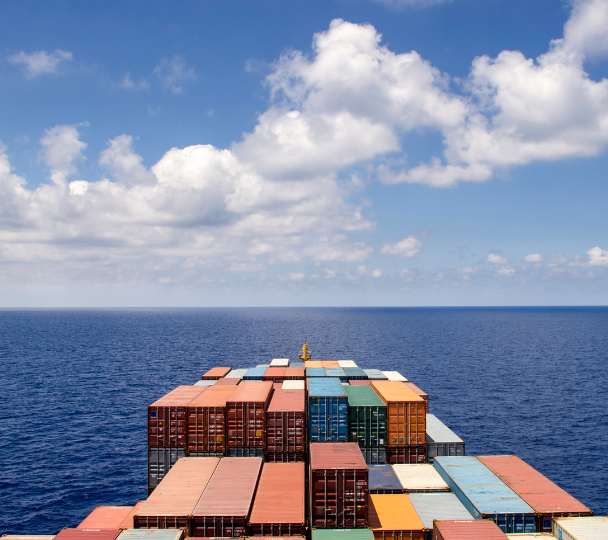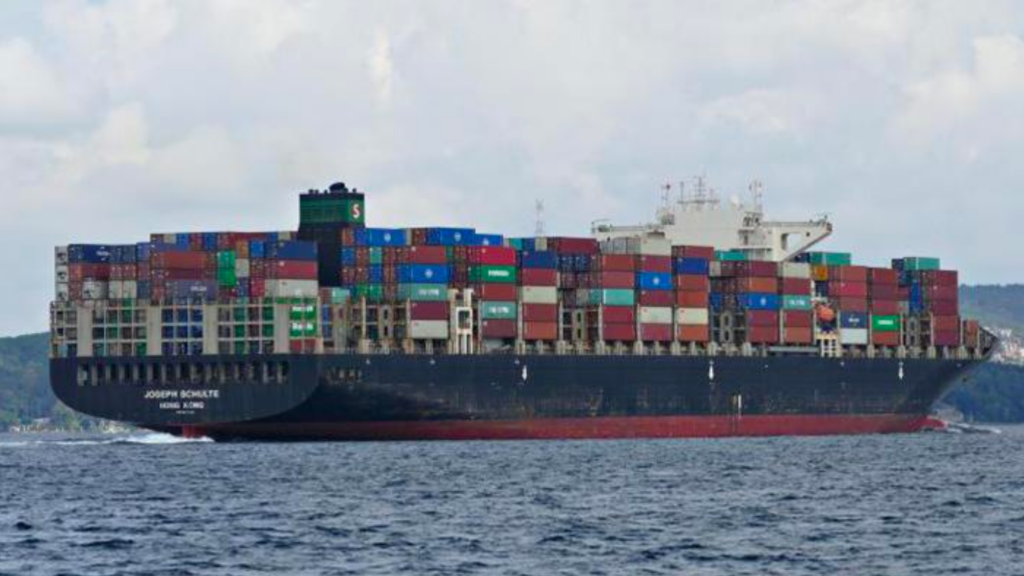Rate Collapse, LTL Turnover, and Humanitarian Corridor.
Your weekly All-Ways round-up of Supply Chain news.

Trans-Atlantic Rate Collapse
The trans-Atlantic headhaul market has collapsed and it’s scaring shippers and carriers. Low demand and an overabundance of capacity have caused spot rates to tumble below pre-pandemic levels and 50% below the same period in 2019. Westbound rates are continuing to fall by double-digits weekly as there’s 25% more capacity and 13.6% less demand in comparison to the first half of last year.
“In some cases, we are not even making our costs,” said Hapag-Lloyd CEO Rolf Habben Jansen.
Since the end of July, rates for North Europe to US East Coast have dropped more than 10% to
North Europe to US East Coast rates have lost more than 10% of their value since the end of July, $817 per FEU, excluding origin and destination terminal handling charges (THCs).
Significant capacity cuts are likely on the horizon. “We need to do something to keep our costs under control and we are actively looking at what we can do, and I wouldn’t be surprised if we do something fairly soon,” Habben Jansen said.
But why is this happening?
With a surplus of US inventory, economic weakness, and consumer uncertainty, it’s hard to understand why carriers have overloaded capacity on the westbound trade lane with no sign of major cutbacks happening. Most carriers would be losing money at the current rate levels on the trans-Atlantic.
“No other trade is being drowned like this one,” Peter Sand, chief shipping analyst at Xeneta said. “Shippers are spoiled for choice as there are plenty of services sailing underutilized.”
Although the market will turn, the big question is when.
LTL Rates on the Rise
With Yellow filling for bankruptcy and shutting its doors, more than 150 truck terminals are going to be put on the market for sale. This will be the biggest redistribution of assets in US trucking history as Yellow was the third-largest US LTL trucking company.
“Transport real estate generally tracks to the state of the transportation industry, so 2023 is shaping up to be a less than banner year, both for landlords and sellers,” said Ted Morandin, managing member of Morprop Advisors. “There are now more empty truck terminals coming to market across North America, and fewer users for them, than at any time in history,” even though trucking real estate was highly sought after before Yellow’s collapse.
The LTL market will experience disruption and rate hikes over the next few months. It will take time for the acquired facilities to be absorbed into their distribution network and for the influx of volume coming from Yellow customers to other carriers to settle.
When shippers started moving away from Yellow in June and July, other LTL companies saw a jump in shipments but with its shutdown, that number doubled. Saia, an LTL company, saw a 6% increase in July and a 13% jump in August. Everyone will feel the pinch of rising rates, but particularly, those who predominantly used Yellow’s services will experience the biggest increase in LTL costs.
“We’re looking at some of those [Yellow] terminals,” said Tom Schmitt, CEO of Forward Air, an expedited LTL and truckload provider. “We went from a negative year-over-year change in tonnage in July to a positive comparison in August. Some of that is due to the success of our sales team but it’s also some of the Yellow business making its way to us.”
Evacuating Trapped Ships
A temporary "humanitarian corridor" has been established in the Black Sea making it possible for many ships that have been stuck in Ukrainian ports to leave.
The Joseph Schulte has left the port of Odesa, the first container ship departing since the start of the war on February 24, 2022.
"The corridor will primarily be used to evacuate ships that were in Ukrainian ports (Chornomorsk, Odesa and Pivdennyi) when Russia started its invasion," Ukraine’s Deputy Prime Minister Oleksandr Kubrakov wrote in a post on Facebook.
Ukraine has made it abundantly clear that no ships leaving its ports were for military purposes.
Russia has not commented on the opening of the corridor in the Black Sea. But as the ship left, Russia attacked and destroyed grain facilities in Reni, a river port. The corridor has continued operations.
Russia may have self-sabotaged when it withdrew from the UN-established grain agreement in July. The country said ships heading for Ukrainian ports could be considered a military target and even shot warning fire at a vessel traveling towards Ukraine.
"This will be a dilemma for Russia, which has gone from having reasonable control over who sails in and out of Ukraine under the grain agreement, to not being able to control anything at all," says Anders Puck Nielsen of the Norwegian Defense Academy.
The ship’s departure indicates a defeat from Russia’s side.



